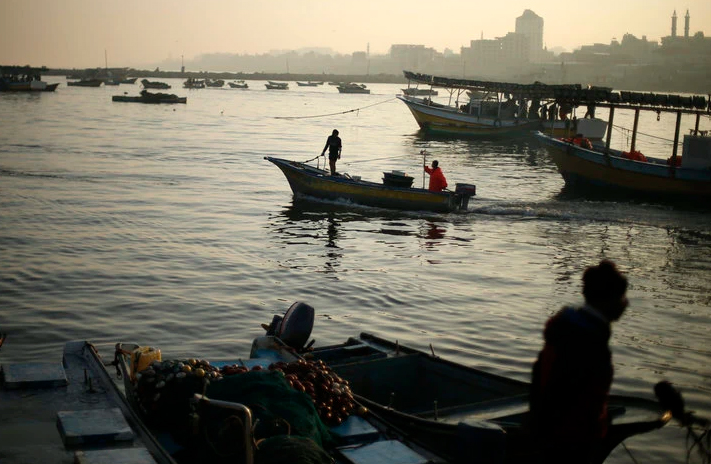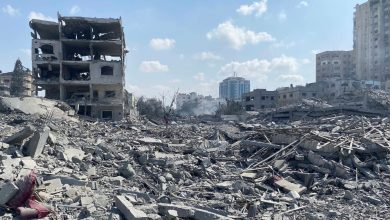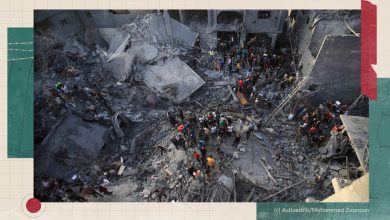Building a Seaport in Gaza: Prospects, Challenges, and Opportunities

A seaport in Gaza would not only be an important economic and developmental leap forward for Palestine, but also an expression of its unity and sovereignty. To achieve this, there are multiple options available, each with its own unique set of challenges and opportunitie.
By: Omar Shaban
Building a seaport in the Gaza Strip, amid the current Palestinian political, economic, and social climate at the internal and international levels, may seem unrealistic. Such a project is predominantly subject to political and security considerations rather than economic ones. Most important of these is the issue of Palestinian sovereignty in light of the internal division, as well as the suspension of the negotiation process between Israel and Palestine. In addition, the Israeli restrictions imposed on economic development prevent most international parties, and even the Palestinian private and public sectors, from investing in the Gaza Strip or the West Bank.
Even the best development plans, especially in the Gaza Strip, are doomed to fail as long as the Palestinians are deprived of their land and natural resources, and are denied the right to build a port that allows them to engage in the most basic commercial and economic activities. International parties have not concerned themselves with the restrictions imposed by the occupying power, as much as they have with the repercussions of the recurrent rounds of violence between Israel and Gaza or the West Bank. The international community’s reaction has remained limited to de-escalation attempts and pumping humanitarian aid or reconstruction funds through indirect, slow, and costly mechanisms to avoid dealing with Hamas. This has allowed Israel to prevent the entry of materials and equipment into Gaza. In other cases, international parties provided aid through the so-called UN-led Gaza Reconstruction Mechanism, launched in 2014; the mechanism gives the government of Israel a “security veto over all items”. Economic development has therefore become subject to Israeli security concerns, regardless of the welfare of the people of Gaza.
Israeli security concerns, and their aggravating economic effects, have become a serious obstacle. Overcoming this obstacle requires quick action, a political outlook that prioritizes the need for a port, and a new mechanism that is agreed upon by the major stakeholders, emphasizing Palestinian ownership of the process. Indeed, the Palestinians have no shortage of ideas on how to invest in available, albeit limited, resources. They are capable of coming up with a development vision, with regard to the Palestinian-administered lands, to facilitate their lives and improve their economic conditions.
In the context of Gaza’s difficult conditions—where its people are isolated, and development and mobility are severely restricted—it is necessary to discuss the possibilities of building a port as an economic tool, because the Palestinians need much more than humanitarian aid to achieve long-term stability. Rather, the Palestinians need a sustainable development plan, the ability to trade, create jobs, and address the environmental damages caused by successive Israeli attacks, not to mention drinking water and sanitation issues.
From Accepted Idea to Halted Construction
For Palestinians, a port in Gaza is a necessity on the way to establishing a Palestinian state, and the basis for its economic development. For a coastal state like Palestine, the construction and operation of the port is an important economic lever and means of transportation for import and export. Palestinians aspire to sovereignty, independence, and improvement in living conditions. Hence, the main motives behind establishing the port are both political and economic. A port will provide services to all Palestinians in the various governorates and will serve the Palestinian territories as a whole, and would serve to bolster the network of nearby ports and other land crossings. This necessitates studying the Palestinian needs in establishing the port for commercial and humanitarian transport.
Prior to 1967, Gaza had access to a port from which it exported and imported what it needed. The issue of building a seaport and an airport in Gaza was also raised in the peace process—first in the 1993 Oslo Accords, and then in the 1999 Sharm El-Sheikh Memorandum. The implementation was supposed to start through the Sharm El-Sheikh Memorandum signed in September 1999.
Throughout the years and despite the many proposals, Israel only expressed official approval for the establishment of a port in Gaza in the agreements signed in Oslo and Sharm El-Sheikh. These agreements were followed by Palestinian governmental procedures and decrees to organize the construction and management of the port. Pursuant to the Palestinian Presidential Decree No. 47 of 1999, the Palestinian Sea Ports Authority was established. On April 30, 2000, Presidential Decree No. 1, was issued for the establishment of the Gaza Sea Port. The Palestinian Sea Ports Authority’s main task was to provide a highly efficient maritime transport system in Palestine and establish, manage, and operate the marine facilities, including commercial, tourist, and fishing seaports in Palestine.
At the beginning of 2000, the Palestinian Authority (PA) began building a small port on the coast of the center of Gaza City with European funding, but the port was bombed and destroyed by Israel in the second Intifada, only three months after its construction began. After the 2005 Agreement on Movement and Access, after the unilateral Israeli withdrawal from Gaza, the PA started construction again. The agreement also included a clause guaranteeing that the port would not be destroyed by Israel again.
Yet, after Hamas won the second legislative elections in 2006 and took control of Gaza, and the PA’s influence declined and became limited to the West Bank, the Israeli-imposed blockade and the Palestinian political division in 2007 halted the Palestinian development process in various fields, including the construction of the port.
In light of the deteriorating economic conditions and despite the escalation of the conflict and Israeli attacks on Gaza throughout the past years, there have been renewed talks about the port in Gaza. This came either in the context of breaking the blockade, or through the attempts to improve the economic conditions in Gaza, which suffers skyrocketing unemployment rates that reached 46.9 percent in 2021, according to the Palestinian Central Bureau of Statistics.
During the 2014 war on Gaza, Hamas, during ceasefire negotiations, demanded the establishment of the port, but Israel rejected the idea categorically. Hamas’ spokesman Sami Abu Zuhri told Al Jazeera at the time that “the Israeli response delivered by the Egyptian side to the Palestinian delegation did not mention the commercial port that the Palestinians demand, nor the airport they demand to reactivate.” Then, the debate about the port expanded, and several reconstruction proposals emerged.
Israel’s refusal is based mainly on security pretexts, although achieving security requires reducing the conflict and improving the economic conditions of Palestinians, not the opposite. Moreover, the Palestinians’ need for Israeli ports will remain, especially when it comes to the bulky goods that require major ports.
Options Moving Forward
A group of alternatives were proposed in academic and political circles to reactivate a “sea channel” in Gaza. The issue of the seaport falls under the larger issue of borders and mobility, which includes the land crossings, but given Palestinian and regional considerations, there have been talks about an alternative solution to provide a sea channel for Gaza as an alternative to the port. Former Mossad Director Meir Dagan proposed an artificial island off the coast of Gaza that would serve as a seaport and an airport. The idea was later adopted by the former Minister of Transportation, Israel Katz. However, the Israeli government rejected the proposal on August 5, 2016, for security reasons. Ismail Haniyeh, then-deputy head of Hamas’s political bureau, responded by describing the construction of a port in Gaza as “an inherent right of the Palestinian people,” adding that it should have been fulfilled after the 2014 Israeli war on Gaza ended.
Meanwhile, the Palestinian Sea Ports Authority said that it was studying proposals to use Egypt’s El-Arish Port temporarily and develop maritime transport lines between the Port of El-Arish and Gaza’s harbor to dispense with the Israeli ports, which charge the PA high costs and affect the development of the trade sector in the Palestinian territories.
The Israeli government re-discussed the port after the security, political, and economic developments in Gaza in 2018, following border protests known as the Great March of Return. During his visit to Cyprus, former Israeli Defense Minister Avigdor Lieberman discussed a sea bridge from Cyprus to Gaza on June 21, 2018.
Other proposals were discussed, including a “spatial vision for the governorates of Gaza”, which focused on raising the economic standards by the year 2050. Seventy stimulus projects were proposed, including a “floating port” to confront the challenges mentioned in the United Nations report “Gaza in 2020: A liveable place?”
According to the Sea Ports Authority, the PA has studied all the presented alternatives, but it has not given any official response. In addition, all these proposals were not formally presented by decision-makers. Give n the Gaza Strip’s small area (362 square km), the massive population density, the limited agricultural lands, and the environmental repercussions of building the port, these proposals can be discussed under four main categ ories: establishing a p ort in the Gaza Strip, establishing sea passage lines, leasing a pier in an already-existing port, and building an artificial island off the Gaza coast.
A port can be built in central, northern, or southern Gaza. The Palestinians accept establishing a port in Gaza, regardless of its location, as long as it serves their economic interests and maritime sovereignty, especially if the construction specified in the Oslo Accords and Sharm el-Sheikh Memorandum is resumed. Such a port would be accepted and funded by the international community.
Israel does not want to build or activate the port in the south under security pretexts, while the Palestinian political situation, where Hamas and the PA compete for influence and legitimacy, further complicates the issue. Although the establishment of a port in the north of Gaza facilitates Israel’s security control over it, it could cause environmental problems, especially coastal erosion.
Sea passage lines, on the other hand, are mainly political rather than economic. Unlike the port, they are temporary solutions that do not bring about economic development. And despite having zero environmental and geographical problems, they need international approval and security guarantees. Israel proposed the Cyprus-Gaza maritime line, whereby a port is built in Cyprus and goods are shipped to Gaza, an indication of its initial approval, but the idea has not yet turned into an official project.
Neither Hamas nor the PA have objected to the establishment of a sea passage line as long as it is a temporary solution until the construction of the port is resumed. Moreover, the Palestinian Prime Minister’s Council submitted a proposal studying the establishment of a sea line between the Gaza port and the nearest Turkish port under Turkish sponsorship and supervision.
When it comes to leasing a pier, the options are Israel and Egypt. Leasing a pier is essentially a temporary solution and does not eliminate the need for a port in Gaza and its development to handle commercial and humanitarian transportation.
Israel may accept leasing a pier in the Port of Ashdod because it meets its security requirements. And since it is an existing port, there will not be any additional environmental or geographical damages. However, Israel will not accept that it be administered by the Palestinians. In addition, just leasing a pier will not fulfill Palestinians’ political and economic aspirations, and it will incur large land transportation fees through Israel. On the other hand, Egypt, which already has the only land port with Gaza and deals with Gaza’s humanitarian needs, may agree to the proposal. The Palestinians accept this proposal and have studied it. It will not conflict with Palestinian aspirations since it is only a temporary solution. It will generate financial returns for Egyptians and Palestinians and will eliminate the need for the high transportation costs via the Ashdod Port. There will be no additional environmental and geographic problems since the port is already standing. As for the Israeli position, it may be positive but only with international and security arrangements. To succeed, there must be regional consensus, a political solution, and the approval of the PA.
Alternatively, building an artificial island off the coast of the Gaza Strip that contains a seaport and an airport is one of the best ideas on the environmental, geographical, and operational levels. However, its costs are very high, and there may be a political and security dilemma imposed by Israel since the island would be part of the Palestinian territories, but the operational and security control would lie with Israel.
Any solution needs political approval from the main parties and an international agreement. A port is not just a commercial enterprise, but an expression of national sovereignty and operational government administration. Ships and tankers operate in line with the regulations of the International Maritime Organization (IMO) and other international regulations, such as the United Nations Convention on the Law of the Sea of 1982, the Convention on Facilitation of International Maritime Traffic (FAL) of 1965, and other international agreements that address international trade at sea, which may qualify the Palestinians to manage the port.
In the meantime, the Sea Ports Authority is following up on Palestine’s accession to the IMO to ensure the development of the maritime transportation sector in the Palestinian territories. This raises questions regarding Gaza’s ability to operate the port on an international level. The PA would reject any proposal that would establish coexistence between the Hamas-ruled Gaza and Israel without a political solution. Moreover, Palestinians’ lack of a unified vision for the port shows that they are unable to move forward in its construction and operation, which is what Israel is trying to promote internationally.
Establishing the Port Is in Everyone’s Interest
In general, seaports between neighboring countries are established under international agreements. Moreover, a port project is not a matter of construction only, but a matter of operation as well. Given the Palestinian situation, the issue of building a seaport and an airport was raised within the political solution and it was discussed in bilateral agreements. Reactivating those agreements is the only realistic alternative, especially since European funding has already been allocated, and in 2016 was estimated at $200250 million according to the Gaza Seaport Group of Experts. In comparison, the costs of establishing an artificial island are estimated to be a whopping $7-10 billion. Who would bear these increased construction costs, in light of the decline in the financial aid allocated to the Palestinian people?
Security concerns may be a point of departure for the resumption of the construction of the port. Yet without the provision of the requirements for economic stability, the political situation will remain in crisis. Resuming construction is a Palestinian priority because it reduces the high transportation costs. Currently, five to eight thousand truckloads of goods enter the Gaza Strip every month from Israel. The Gaza seaport would save extra costs for the benefit of the Palestinian economy.
Furthermore, Gaza imports all its requirements and needs. Reducing import costs would support the economy on the one hand, and provide employment opportunities on the other, which will reduce the skyrocketing unemployment rates. Thus, the establishment of the port will bring about a boom in the Palestinian economy as a whole. Accordingly, the solution remains primarily political, because Israel’s security complications would doom any proposed alternative to failure. The first steps to restart the construction of the seaport begins with reactivating international agreements, which are the guarantor of the port’s international operation.
Given the current internal Palestinian political division, it is possible to rely on a temporary solution under UN and international auspices to confront the Israeli rejection, which would change the prevailing Palestinian mindset. Establishing the port and maximizing economic gains would push all parties to achieve common interests while benefiting the Palestinian people at the same time.
The construction of the port is an important solution that would help alleviate the humanitarian crises in the Gaza Strip, which are the main cause of tension and wars between Israel and the Palestinian military factions. A port in Gaza would be a powerful incentive for reconciliation between Gaza and the West Bank, as the interests of both sides could be realized. International organizations can be involved in the management and supervision of the port, as was the case with the Rafah crossing between Gaza and Egypt, where a European monitoring mission once supervised the crossing to provide security guarantees for all parties. A port in Gaza should not wait for reconciliation. It should be an incentive for it. A new perspective must be adopted based on the fact that a port in Gaza is an important factor for stability, development, and peace in the region.
Building a Seaport in Gaza: Prospects, Challenges, and Opportunities




